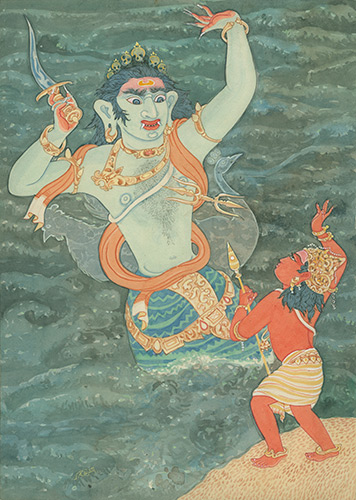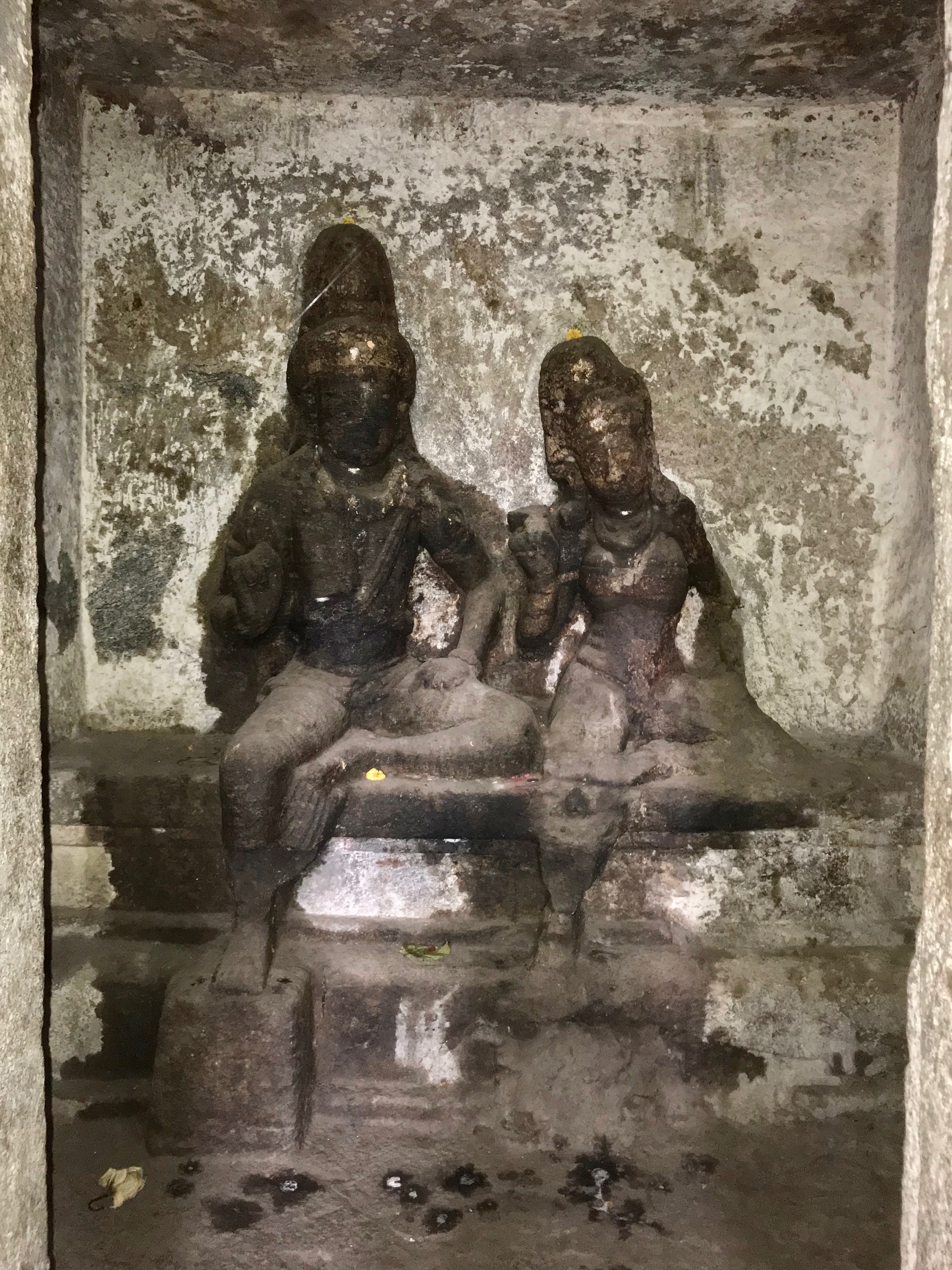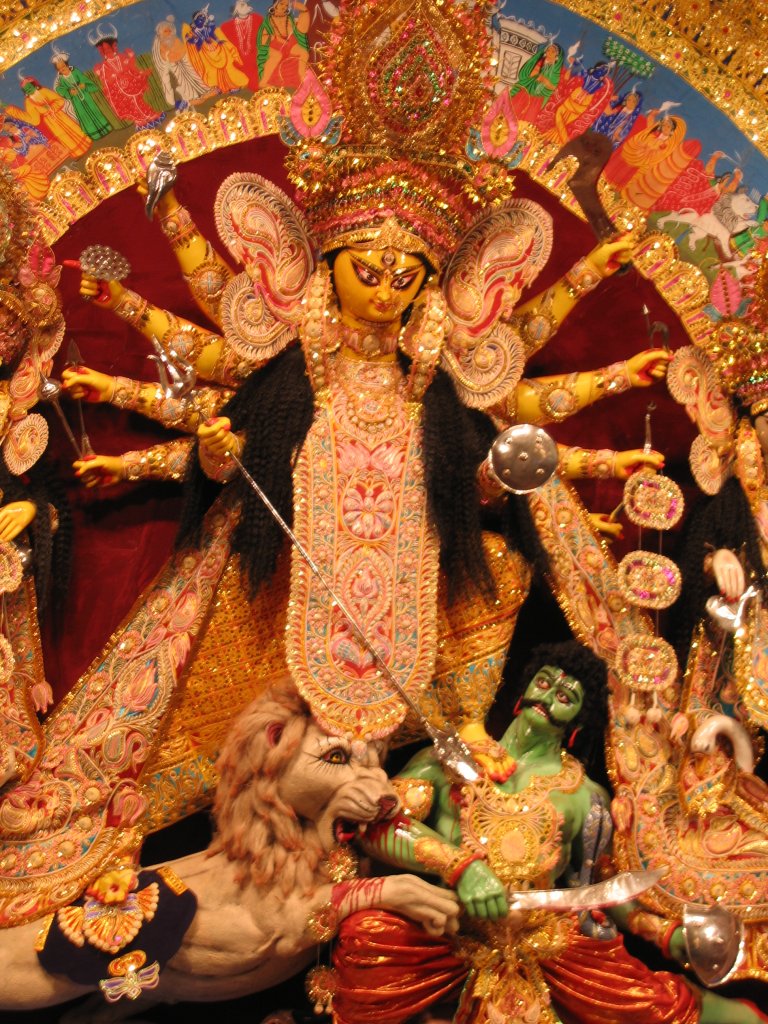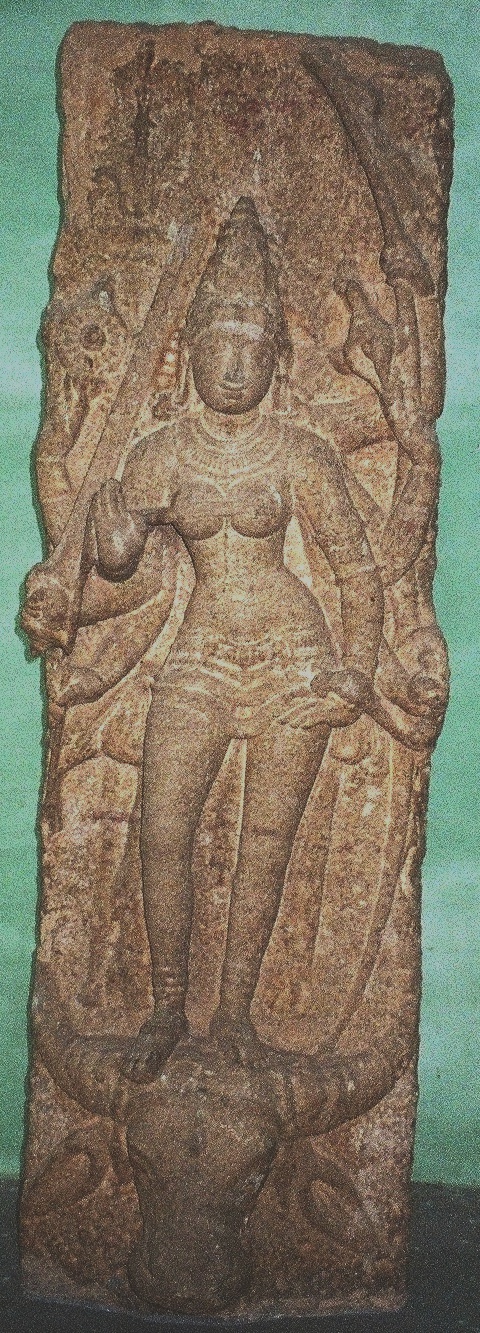|
Tirumurukāṟṟuppaṭai
''Tirumurukātṟuppatai'' (, meaning ''Guide to Lord Murugan'') is an ancient devotional Tamil poem in the Sangam literature genre entirely dedicated to the god Murugan. Murugan is described as the nephew of the god Vishnu, who is called Mayon or the ruler of the worlds. Authored by Nakkiranar, it is the first poem in the Ten Idylls (''Pattuppāṭṭu'') anthology. The poem is generally dated to the late classical period (2nd to 4th century CE), with some scholars suggesting it may have been composed a few centuries later. The anthologies and poems of the Sangam literature have numerous references and verses to Murugan – also known as Subrahmanya, Kumara, Skanda, Kartikeya in other parts of India. The ''Tirumurukarruppatai'' poem is exclusively about different manifestations and shrines of Murugan. It describes different major temples dedicated to him in the Tamil region, six locations, the natural scenes, worship practices and the culture of the people. Description ... [...More Info...] [...Related Items...] OR: [Wikipedia] [Google] [Baidu] |
Sangam Literature
The Sangam literature (Tamil language, Tamil: சங்க இலக்கியம், ''caṅka ilakkiyam''), historically known as 'the poetry of the noble ones' (Tamil language, Tamil: சான்றோர் செய்யுள், ''Cāṉṟōr ceyyuḷ''), connotes the early classical Tamil literature and is the earliest known literature of South India. The Tamil tradition links it to Legendary Tamil Sangams, legendary literary gatherings around Madurai in the ancient Pandya dynasty, Pandya kingdom. It is generally accepted by most scholars that the historical Sangam literature era, also known as the Sangam period, spanned from 100 BCE to 250 CE, on the basis of linguistic, epigraphic, archaeological, numismatic and historical data; though some scholars give a broader range of 300 BCE to 300 CE. The Eighteen Greater Texts (Patiṉeṇmēlkaṇakku), along with the Tamil grammar work Tolkāppiyam, Tolkappiyam, are collectively considered as Sangam literature. These tex ... [...More Info...] [...Related Items...] OR: [Wikipedia] [Google] [Baidu] |
Ten Idylls
The Ten Idylls, known as Pattuppāṭṭu () or Ten Lays, is an anthology of ten longer poems in the Sangam literature – the earliest known Tamil literature. They range between about 100 and 800 lines, and the collection includes the celebrated Nakkīrar's '' Tirumurukāṟṟuppaṭai'' (lit. "Guide to Lord Murukan"). The collection was termed as "Ten Idylls" during the colonial era, though this title is considered "very incorrect" by Kamil Zvelebil – a scholar of Tamil literature and history. He suggests "Ten Lays" as the more apt title. Five of these ten ancient poems are lyrical, narrative bardic guides (''arruppatai'') by which poets directed other bards to the patrons of arts such as kings and chieftains. The others are guides to religious devotion (Murugan) and to major towns, sometimes mixed with akam- or puram-genre poetry. The ''Pattuppāṭṭu'' collection is a later dated collection, with its earliest layer composed sometime between 2nd and 3rd century CE, the m ... [...More Info...] [...Related Items...] OR: [Wikipedia] [Google] [Baidu] |
Valli
Valli () is a devi, Hindu goddess, and the second consort of the deity Murugan. An incarnation of the goddess Sundaravalli, daughter of Vishnu, Valli is born on earth as the daughter of a chieftain, leading a life of a huntress. Murugan, the god of war, eventually woos and weds her, according to Tamil mythology, Tamil folklore. Both of their legends originate from the mountain region also known as Sangam landscape, Kurunji in Tamilakam. Her sister, Devasena, Amritavalli (Devasena), also succeeds in marrying Murugan as the adopted daughter of Indra, making them sister-wives. Nomenclature ''Vaḷḷi'' is used to refer to many Village deities of South India, local or Grāmadevatā, Village gods in Tamil Nadu and Kerala in India and by the Rodiya and Vedda peoples of Sri Lanka. Vaḷḷi is also known as ''Pongi'' at Vallimalai in Vellore district, Vellore, Tamil Nadu, and the pond from which she drew water to quench the thirst of Murugan is still there. This pond, though in an o ... [...More Info...] [...Related Items...] OR: [Wikipedia] [Google] [Baidu] |
Murugan
Kartikeya (/ kɑɾt̪ɪkejə/; ), also known as Skanda ( /skən̪d̪ə/), Subrahmanya (/ sʊbɾəɦməɲjə/, /ɕʊ-/), Shanmukha ( /ɕɑnmʊkʰə/) and Murugan (/ mʊɾʊgən/), is the Hindu god of war. He is generally described as the son of the deities Shiva and Parvati and the brother of Ganesha. Kartikeya has been an important deity in the Indian subcontinent since ancient times. Mentions of Skanda in the Sanskrit literature data back to fifth century BCE and the mythology relating to Kartikeya became widespread in North India around the second century BCE. Archaeological evidence from the first century CE and earlier shows an association of his iconography with Agni, the Hindu god of fire, indicating that Kartikeya was a significant deity in early Hinduism. He is hailed as the "favoured god of the Tamils", and the tutelary deity of the Kurinji region in Sangam literature, whose cult gained popularity later. As per theologists, the Tamil deity of Murugan coalesced ... [...More Info...] [...Related Items...] OR: [Wikipedia] [Google] [Baidu] |
Devasena
Devasena (, , ) is the Hindu goddess of aspirations, and the consort of the war god Kartikeya (Murugan). She is also known as Devayanai, Deivanai, and Deivayanai in Tamil texts. Her name is also spelled as Teyvanai or Tevayanai (). Devasena is described as the daughter of the ''Prajapati'' Daksha in the ''Mahabharata'', while some Sanskrit scriptures consider her as the daughter of Indra, the king of the devas (gods), and his wife Shachi. In the Tamil iteration of the Skanda Purana, she is portrayed as the daughter of the god Vishnu, who is later adopted by Indra. She is betrothed to Kartikeya by Indra, when he becomes the commander-in-chief of the devas. In Tamil accounts, Devasena is generally depicted as an antithesis of Valli, her sister-wife; together they complete the deity. Devasena is generally depicted with Murugan, and is often also accompanied by Valli. In Tamil Nadu, Devasena does not enjoy independent worship, but is venerated as Murugan's consort in most of ... [...More Info...] [...Related Items...] OR: [Wikipedia] [Google] [Baidu] |
Tamil Language
Tamil (, , , also written as ''Tamizhil'' according to linguistic pronunciation) is a Dravidian language natively spoken by the Tamil people of South Asia. It is one of the longest-surviving classical languages in the world,. "Tamil is one of the two longest-surviving classical languages in India" (p. 7). attested since 300 BC, 300 BCE.: "...the most acceptable periodisation which has so far been suggested for the development of Tamil writing seems to me to be that of A Chidambaranatha Chettiar (1907–1967): 1. Sangam Literature – 200BC to AD 200; 2. Post Sangam literature – AD 200 – AD 600; 3. Early Medieval literature – AD 600 to AD 1200; 4. Later Medieval literature – AD 1200 to AD 1800; 5. Pre-Modern literature – AD 1800 to 1900" at p. 610 Tamil was the lingua franca for early maritime traders in South India, with Tamil inscriptions found outside of the Indian subcontinent, such as Indonesia, Thailand, and Egypt. The language has a well-documented history wit ... [...More Info...] [...Related Items...] OR: [Wikipedia] [Google] [Baidu] |
Shaivism
Shaivism (, , ) is one of the major Hindu denominations, Hindu traditions, which worships Shiva as the Para Brahman, supreme being. It is the Hinduism#Demographics, second-largest Hindu sect after Vaishnavism, constituting about 385 million Hindus, found widely across South Asia (predominantly in South India, Southern India), Sri Lanka, and Nepal.Keay, p.xxvii. The followers of Shaivism are called Shaivas or Shaivites. According to Chakravarti, Shaivism developed as an amalgam of pre-Aryan religions and traditions, Vedic Rudra, and post-Vedic traditions, accommodating local traditions and Yoga, puja and bhakti. According to Bisschop, early shaivism is rooted in the worship of vedic deity Rudra. The earliest evidence for sectarian Rudra-Shiva worship appears with the Pasupata (early CE), possibly owing to the Origins of Hinduism, Hindu synthesis, when many local traditions were aligned with the Brahmanism, Vedic-Brahmanical fold. The Pāśupata movement rapidly expanded through ... [...More Info...] [...Related Items...] OR: [Wikipedia] [Google] [Baidu] |
Tirumurai
''Tirumurai'' (Tamil language, Tamil: திருமுறை, meaning Holy Order) is a twelve-volume compendium of songs or hymns in praise of Shiva in the Tamil language from the 6th to the 11th century CE by various poets in Tamil Nadu. Nambiyandar Nambi compiled the first seven volumes by Appar, Sambandar, and Sundarar as ''Tevaram'' during the 12th century. During the course of time, a strong necessity was felt by scholars to compile Shaivism, Shaiva literature to accommodate other works. ''Thiruvasakam, Tiruvasakam'' and ''Tirukovayar'' by Manickavasagar are included as the eighth, nine parts are compiled as the ninth ''Tirumurai'' out of which most are unknown, and the tenth as ''Tirumandiram'' by Tirumular, the famous ''Siddhar''. The eleventh is compiled by Karaikal Ammaiyar, Cheraman Perumal and others. The contemporary Chola dynasty, Chola king was impressed by the work of Nambi and included Nambi's work in the eleventh ''Tirumurai''. Sekkilar's ''Periya Purana ... [...More Info...] [...Related Items...] OR: [Wikipedia] [Google] [Baidu] |
Durga
Durga (, ) is a major Hindu goddess, worshipped as a principal aspect of the mother goddess Mahadevi. She is associated with protection, strength, motherhood, destruction, and wars. Durga's legend centres around combating evils and demonic forces that threaten peace, prosperity, and dharma, representing the power of good over evil. Durga is believed to unleash her divine wrath against the wicked for the liberation of the oppressed, and entails destruction to empower creation. Durga is seen as a motherly figure and often depicted as a beautiful woman, riding a lion or tiger, with many arms each carrying a weapon and often defeating demons. She is widely worshipped by the followers of the goddess-centric sect, Shaktism, and has importance in other denominations like Shaivism and Vaishnavism. The most important texts of Shaktism, Devi Mahatmya and Devi Bhagavata Purana, revere Devi (the Goddess) as the primordial creator of the universe and the Brahman (ultimate truth and reali ... [...More Info...] [...Related Items...] OR: [Wikipedia] [Google] [Baidu] |
Parvati
Parvati (, , IPA: /Sanskrit phonology, pɑɾʋət̪iː/), also known as Uma (, , IPA: Sanskrit phonology, /ʊmɑː/) and Gauri (, , IPA: /Sanskrit phonology, gə͡ʊɾiː/), is one of the principal goddesses in Hinduism, revered as the Devi, goddess of power, energy, nourishment, harmony, love, beauty, devotion, and motherhood. Along with Lakshmi and Saraswati, Sarasvati, she forms the trinity, known as the Tridevi. From her first appearance as a goddess during the Itihasa-Purana, epic period (400 BCE – 400 CE), Parvati is primarily depicted as the consort of the god Shiva. According to various Puranas, Parvati is the reincarnation of Sati (Hindu goddess), Sati, Shiva's first wife, who relinquished her body to sever familial ties with her father, Daksha, after he had insulted Shiva. Parvati is often equated with the other goddesses such as Sati, Uma, Kali and Durga and due to this close connection, they are often treated as one and the same, with their stories frequently ove ... [...More Info...] [...Related Items...] OR: [Wikipedia] [Google] [Baidu] |
Korravai
Kotravai (), is the goddess of war and victory in the Tamil tradition. She is also the mother goddess and the goddess of fertility, agriculture, and hunters. In the latter form, she is sometimes referred to by other names and epithets in the Tamil tradition of South India and Sri Lanka, such as Atha, Mari, Suli, and Neeli. She is the form of the primordial Shakta goddess Parvati. Korava Idal (Malayalam: കുരവ ഇടൽ) and Kulavai Idal (Tamil: குலவை இடல்) refer to the traditional practice of ululation as a war cry or call to victory in Dravidian cultures. Historically associated with battle and triumph, this ritual ululation is a significant cultural expression in the states of Kerala and Tamil Nadu. Today, it is commonly performed during celebratory occasions such as weddings, housewarmings, and other festive events. She is among the earliest documented goddesses in the Tamil Sangam literature, and also found in later Tamil literature. She is ment ... [...More Info...] [...Related Items...] OR: [Wikipedia] [Google] [Baidu] |
Indra
Indra (; ) is the Hindu god of weather, considered the king of the Deva (Hinduism), Devas and Svarga in Hinduism. He is associated with the sky, lightning, weather, thunder, storms, rains, river flows, and war. [3 volumes] Indra is the most frequently mentioned deity in the ''Rigveda''. He is celebrated for his powers based on his status as a god of order, and as the one who killed the great evil, an Asura (Hinduism), asura named Vritra, who obstructed human prosperity and happiness. Indra destroys Vritra and his "deceiving forces", and thereby brings rain and sunshine as the saviour of mankind. Indra's significance diminishes in the post-Vedic Indian literature, but he still plays an important role in various mythological events. He is depicted as a powerful hero. According to the ''Vishnu Purana'', Indra is the title borne by the king of the gods, which changes every Manvantara – a cyclic period of time in Hindu cosmology. Each Manvantara has its own Indra and the In ... [...More Info...] [...Related Items...] OR: [Wikipedia] [Google] [Baidu] |







